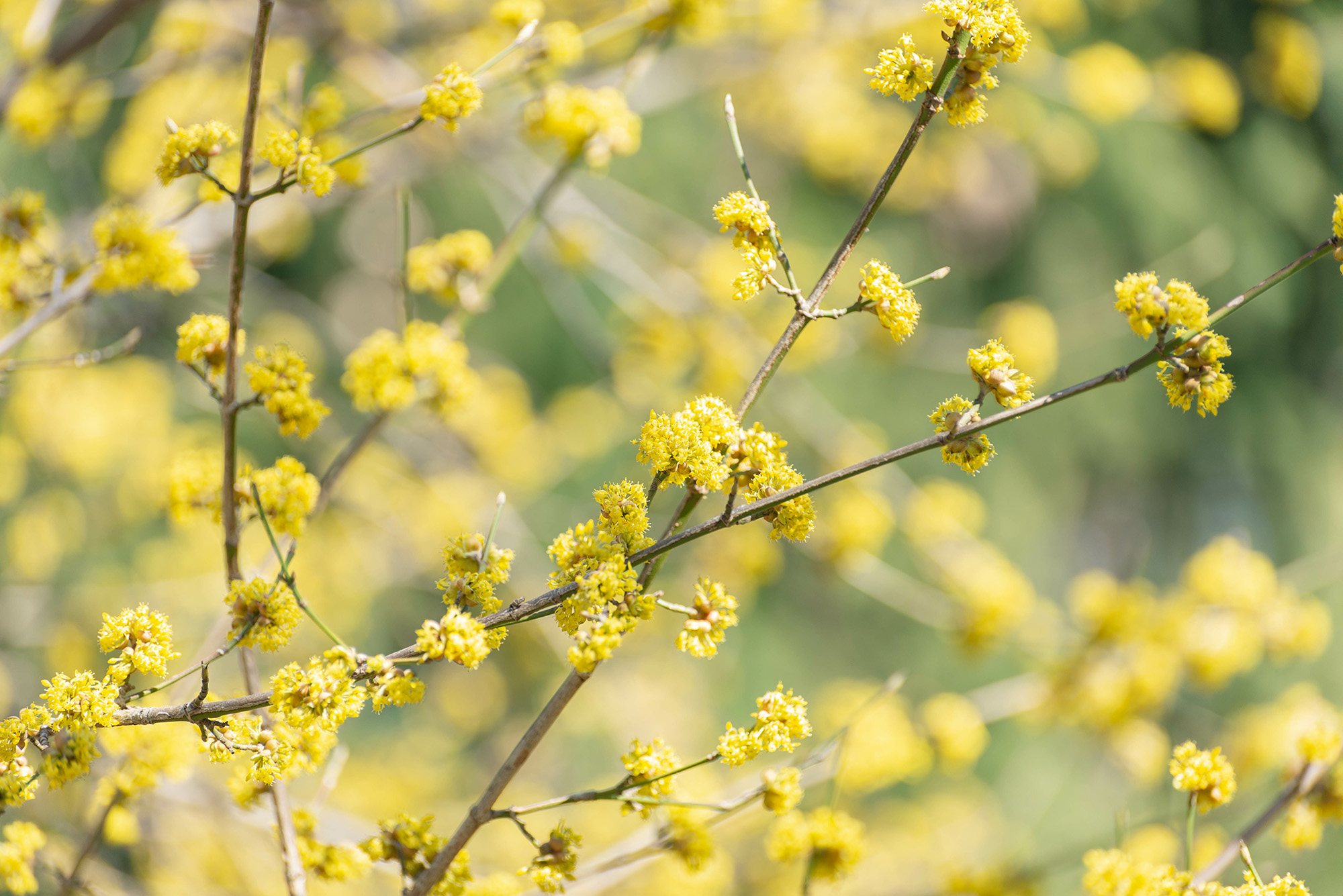- © 2025 Annapolis Home Magazine
- All Rights Reserved
By Kymberly Taylor

Just when you think you cannot take another drab February day, you wake up one morning to the forsythia’s tightly packed yellow buds just about to surge forth. The next day, clouds of yellow flowers float upon its arching branches. Right before our eyes, life has changed instantly for the better! Our creative director, Ryan Gladhill, who rarely touches a plant, loves forsythia. He simply cuts its branches when buds form and “sticks them in a vase,” he says, where they bloom on their own. Unfortunately, its brilliant beauty is short-lived. After 14 days, it drops its golden blossoms, sprouts tiny leaves, and fades into the underbrush.
Happily, there is an alternative: a Maryland native called American Spicebush. A member of the laurel (Lauraceae) family, Lindera benzoin is a deciduous multi-stemmed shrub that grows 6 to 12 feet tall. Easy to grow and lovely in the natural or semi-shade garden, it is found across the Chesapeake watershed, brightening our landscapes and woodland forests.
The University of Maryland Extension notes that Spicebush looks much like forsythia but is extra hardworking and provides “better wildlife value while needing less maintenance.” Like the forsythia, flowers appear before leaves. Unlike the forsythia’s two-week-bloom span, the spicebush blossoms through March and April and feeds our wildlife all year. In the spring, its blossoms are an early source of nectar for small pollinators such as bees, flies, and ants. The Spicebush hosts the Spicebush Swallowtail and Eastern Tiger Swallowtail butterflies, the Promethea Moth, and several other moth species. In the forest, deer and other small animals graze on its twigs and branches. As its blossoms drop and spring turns to summer, alternating elliptical leaves emerge, and green fruits form. Some plants have male flowers, while others have female flowers. Therefore, it is important to have at least one of each to ensure pollination and the production of the berries that form on the female plant.
In the fall, its berries turn scarlet, attracting northern red cardinal, wood thrush, tanager, and veery. Bright yellow foliage brightens the shortening days. In winter, its olive-colored branches are dappled with floral buds or lenticels.
The spicebush’s ecological importance often overshadows its value as a powerful herb, notes the Herb Society of America. Spicebush is sometimes called ‘wild allspice.’ Leaves, flowers, and stems are edible and have a spicy, lemony flavor. Ethnobotanists at Michigan State University report that during the Revolutionary War, when trade with England ceased, colonists used the spicebush’s dried, powdered fruits as a substitute for allspice when cooking wild game. They may have learned about its uses from the Native American Cherokee, who used it to flavor stews, soups, and meats and to brew medicinal tea. When crushed, its stems and leaves create an aromatic yet potent insecticide.
Planting spicebush is like doing a good deed all year long; this industrious plant feeds many birds, bees, butterflies, and deer and shelters chipmunks and rabbits. To see a fresh butterfly unfurl its wings or a red cardinal sing in its branches cheers the heart. As we watch the spicebush’s distinct seasonal phases and how it feeds creatures great and small, we realize that everything necessary is here.
• Plant in rich soil, in part shade.
• Plant several bushes to ensure pollination and berry production.
• Flowers are edible and can be sprinkled in salads.
• Make tea with flowers, leaves, and branches.
• Plant with companions such as Virginia bluebells (Mertensia virginica), bloodroot (Sanguinaria canadensis), and Christmas fern (Polystichum acrostichoides).
University of Maryland Extension: extension.umd.edu
Herb Society of America: herbsociety.org
You may purchase American Spicebush locally at select farmers’ markets and Himmel’s Landscape & Garden Center, himmelsgardencenter.com
© Annapolis Home Magazine
Vol. 15, No. 2 2024